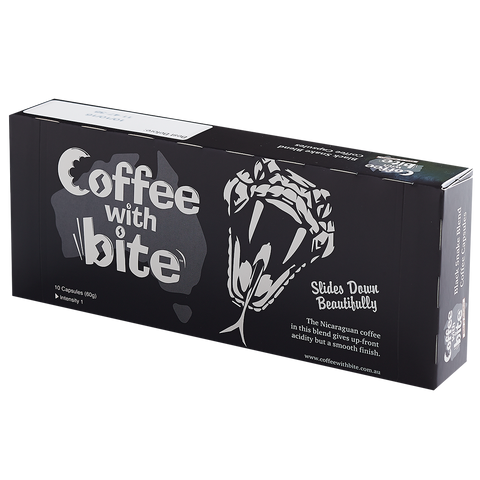A coffee hull is the coffee making equivalent of the teabag: a pre-portioned serving of coffee covered in a paper filter, prepared to be instilled with water. ESE (Easy Serving Espresso) is the globally market criterion for coffee sheathings Any type of vessel that fulfills the ESE requirement could be utilized in any type of coffee equipment that is ESE appropriate. Coffee Pod
Coffee Pod-Deciding On Realistic Solutions In Coffee Capsule
An ESE sheath consists of between 6.5-7.5 grams of coffee, packed into a snug circular puck. The capsule is put in an unique vessel filter (usually supplied with your coffee device) that suits inside the portafilter.
History of ESE capsules.
Coffee pod machines were originally developed for usage in the Italian work environment, to make it quicker and cleaner for workers making and enjoy coffee in the office. Later, these equipments were adapted for usage in restaurants to negate the demand for any person to be learnt utilizing a conventional capuccino equipment.
Utilise espresso shell equipments in the home did not become preferred till Illy produced the ESE specification in 1998. With the launch of this criterion, Illy made a collective effort to mass market these devices as practical method to take pleasure in capuccino in the house.
ESE vessels vs. Standard Planning
The key marketing factor of ESE hulls is comfort. The conventional preparation method for espresso calls for skill and also develops a bunch of mess. Mills need to be calibrated to achieve the right circulation price; the coffee has to be dosed and also tamped appropriately; and afterward coffee premises need to be wiped all the devices, the job area and also generally the floor also. With an ESE hull there is none of this. The coverings are already pre-dosed as well as pre-tamped and the coffee grounds stay consisted of in the paper filter. As soon as finished with, the capsule can be disposed of like a teabag
coffee pods may also be of interest
Nonetheless, the convenience of ESE shucks comes with a cost: the taste of a commonly ready capuccino (done properly) transcends to that of an ESE espresso. In comparison to the standard approach, ESE capuccino lacks deepness of flavour as well as spiritedness in the mouth. The factor for this is ESE skins are not as fresh as the coffee made use of in the typical method, and also with sheathings the brewing time is as well fast to remove the max flavour.
When making capuccino using the traditional technique, the coffee is ground instantly prior to use to preserve freshness. This is because the actual grinding process launches aromatics from the coffee which are lost from the end mug otherwise made use of rapidly. Ground coffee also has a much larger surface area than that of an entire bean, leaving it a lot more prone to air. However, ESE sheaths are far from stagnant. As soon as ground, coffee is swiftly jammed into a strict puck which, although necessary to making coffee, also offers to minimize the area of the coffee. Most producers additionally seal their capsules in individual foil bundles to more protect their flavour.
The circulation price of an ESE espresso is quicker than that of the standard approach. In the traditional technique the objective is to generate a coffee of around 1.25 oz in quantity within 25-30 seconds, as this is the maximum time to essence as much flavour as feasible before launching bitter substances and extreme high levels of caffeine into the drink. With an ESE sheath it could take a lot less than half that time to create the comparable volume. ESE cases are created to have a quicker flow price to boost uniformity from fired to chance. However, the quicker circulation price is dued to much less resistance to the water throughout the brewing process and this consequently leads to a reduced developing pressure, leading to a flatter extraction. As there is no way to manage the flow-rate with an ESE vessel, it would certainly be impossible making capuccino variants such as a ristretto or lungo.
That ESE pods are pre-ground negates the requirement for a coffee mill, which could be a substantial saving. An excellent mill for capuccino production will cost over 100. Nonetheless, the expense of ESE skins is substantially more than coffee beans. Expect to pay three times as a lot for an ESE case than you would for the equivalent weight in beans. On the positive side, unlike beans, no coffee is squandered with ESE capsules.
ESE pods vs. Other Coffee Capsules
There are various types of coffee capsules offered on the marketplace aside from ESE husks, such as Nespresso, and also Senso. In terms of price and preference, there is little distinction between ESE vessels and pills. However, the major problem with these other capsules is that, currently, they are specifically made by one producer: Nespresso is made by Nestle, and Senso by Douwe Egberts. So, as an example, if you pick a Nespresso compatible equipment you are restricted to Nestle coffee. On the various other hand, ESE pods are made to an industry broad specification as well as are subsequently available from all the main Italian roasters, such as Illy and Lavazza, and also lots of various other roasters also. So with an ESE compatible espresso device, you have a much wider option of coffee. Not just that, however with the majority of ESE appropriate machines you have the option of making capuccino the traditional method also.
Coffee Pod-Considering Vital Details In Coffee Capsule
Coffee Pod Video may also be of interest

No comments:
Post a Comment